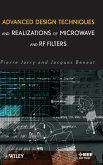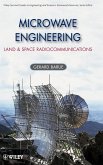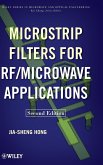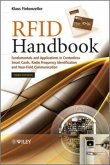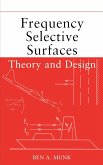Many good phaselocked loops (PLL) books exist. However, how to acquire the input frequency from an unlocked state is rarely covered. This book explores the methods for achieving this locked state for a variety of conditions. Using a minimum of mathematics, it introduces engineers to performance limitations of phase/frequency detector based PLL, the quadricorrelator method for both continuous and sampled mode, sawtooth ramp-and-sample phase detector, self-sweeping self-extinguishing topology, and sweep methods using quadrature mixer based lock detection. Digital implementations versus analog are also considered.
How to acquire the input frequency from an unlocked state
A phase locked loop (PLL) by itself cannot become useful until it has acquired the applied signal's frequency. Often, a PLL will never reach frequency acquisition (capture) without explicit assistive circuits. Curiously, few books on PLLs treat the topic of frequency acquisition in any depth or detail. Frequency Acquisition Techniques for Phase Locked Loops offers a no-nonsense treatment that is equally useful for engineers, technicians, and managers.
Since mathematical rigor for its own sake can degenerate into intellectual "rigor mortis," the author introduces readers to the basics and delivers useful information with clear language and minimal mathematics. With most of the approaches having been developed through years of experience, this completely practical guide explores methods for achieving the locked state in a variety of conditions as it examines:
Performance limitations of phase/frequency detector-based phase locked loops
The quadricorrelator method for both continuous and sampled modes
Sawtooth ramp-and-sample phase detector and how its waveform contains frequency error information that can be extracted
The benefits of a self-sweeping, self-extinguishing topology
Sweep methods using quadrature mixer-based lock detection
The use of digital implementations versus analog
Frequency Acquisition Techniques for Phase Locked Loops is an important resource for RF/microwave engineers, in particular, circuit designers; practicing electronics engineers involved in frequency synthesis, phase locked loops, carrier or clock recovery loops, radio-frequency integrated circuit design, and aerospace electronics; and managers wanting to understand the technology of phase locked loops and frequency acquisition assistance techniques or jitter attenuating loops.
Errata can be found by visiting the Book Support Site at: http://booksupport.wiley.com
How to acquire the input frequency from an unlocked state
A phase locked loop (PLL) by itself cannot become useful until it has acquired the applied signal's frequency. Often, a PLL will never reach frequency acquisition (capture) without explicit assistive circuits. Curiously, few books on PLLs treat the topic of frequency acquisition in any depth or detail. Frequency Acquisition Techniques for Phase Locked Loops offers a no-nonsense treatment that is equally useful for engineers, technicians, and managers.
Since mathematical rigor for its own sake can degenerate into intellectual "rigor mortis," the author introduces readers to the basics and delivers useful information with clear language and minimal mathematics. With most of the approaches having been developed through years of experience, this completely practical guide explores methods for achieving the locked state in a variety of conditions as it examines:
Performance limitations of phase/frequency detector-based phase locked loops
The quadricorrelator method for both continuous and sampled modes
Sawtooth ramp-and-sample phase detector and how its waveform contains frequency error information that can be extracted
The benefits of a self-sweeping, self-extinguishing topology
Sweep methods using quadrature mixer-based lock detection
The use of digital implementations versus analog
Frequency Acquisition Techniques for Phase Locked Loops is an important resource for RF/microwave engineers, in particular, circuit designers; practicing electronics engineers involved in frequency synthesis, phase locked loops, carrier or clock recovery loops, radio-frequency integrated circuit design, and aerospace electronics; and managers wanting to understand the technology of phase locked loops and frequency acquisition assistance techniques or jitter attenuating loops.
Errata can be found by visiting the Book Support Site at: http://booksupport.wiley.com


